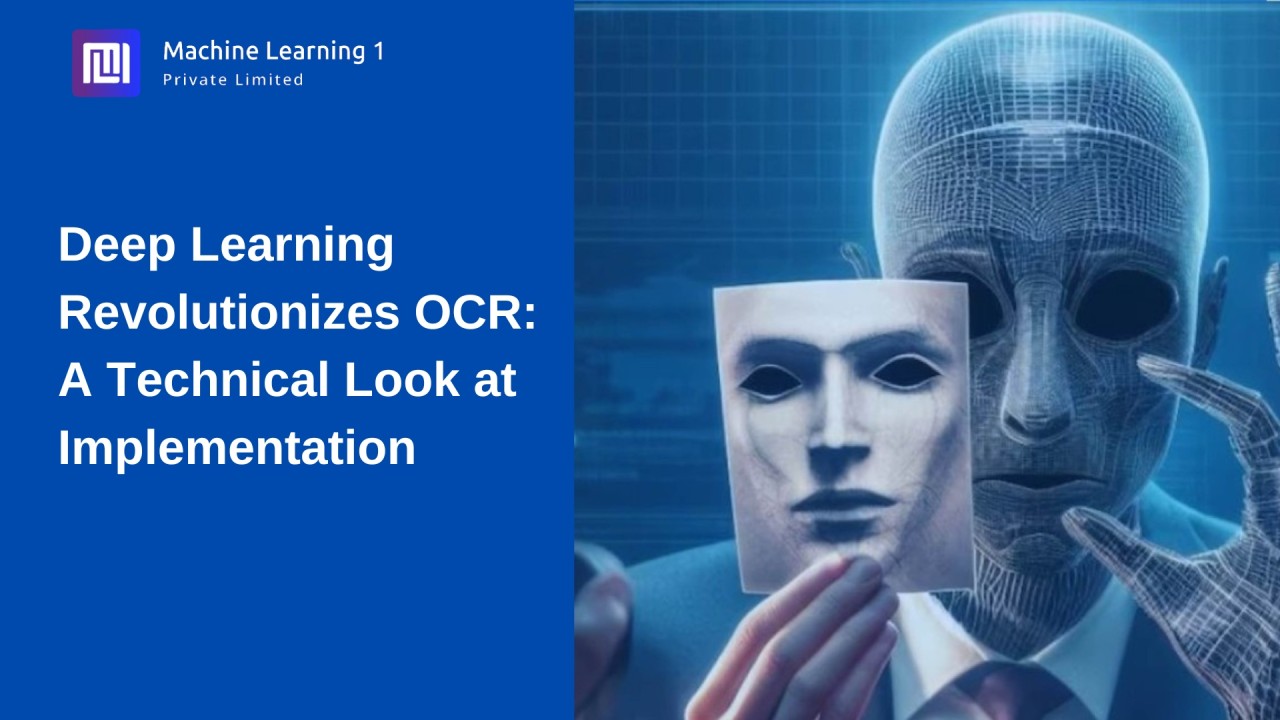
Deep Learning Revolutionizes OCR A Technical Look at Implementation
Optical Character Recognition (OCR) technology has undergone a significant transformation in recent years. While traditional rule-based methods served their purpose, they often struggled with complex fonts, skewed images, and poor quality scans. Enter deep learning-based OCR, a powerful approach that leverages artificial neural networks to achieve superior accuracy and versatility.
This article delves into the technical aspects of implementing deep learning-based OCR. We'll explore the key stages involved, from data preparation to model training and integration.
1. Data Acquisition and Pre-processing: Building a Strong Foundation
The success of any deep learning model hinges on the quality and relevance of its training data. For deep learning-based OCR, this translates to a collection of digital images containing text and their corresponding, accurately labelled transcripts.
Here are some crucial sub-points to consider within data acquisition and pre-processing:
2. Model Selection and Training: Unleashing the Power of Deep Learning
Once the data is prepared, it's time to select and train the deep learning model. Popular architectures for OCR tasks include Convolutional Neural Networks (CNNs) for feature extraction and Recurrent Neural Networks (RNNs) for sequence recognition.
Here's a breakdown of the model training process:
领英推荐
3. Evaluation and Refinement: Ensuring Accuracy and Efficiency
Following training, the model's performance needs to be thoroughly evaluated using a separate validation dataset. Metrics like character error rate (CER) and word error rate (WER) measure the model's effectiveness in accurately recognizing text elements.
This section can delve into:
4. Integration and Deployment: Putting Deep Learning OCR to Work
The final stage involves integrating the trained OCR model into a practical application. This might involve creating an API for developers or embedding the model within a software solution.
Here are some key considerations for integration and deployment:
By following these steps and considerations, you can harness the power of deep learning to create robust and versatile OCR solutions. Deep learning-based OCR opens doors to exciting possibilities across various industries, from automating document processing to enhancing accessibility tools.
Founder and CEO of Dowhf Technologies | Full Stack PHP Laravel Developer | React js | Next js | Node.js | Express js | MongoDB | WordPress plugin developer | KeyDevs Technologies
1 年Fantastic overview of the transformative power of deep learning in OCR technology! Your breakdown of the key stages, from data acquisition to integration, provides valuable insights into implementing robust OCR solutions. The emphasis on data diversity and augmentation, along with model selection and evaluation techniques, underscores the importance of thorough preparation and refinement. Exciting to see how deep learning is revolutionizing text recognition across industries. Great work